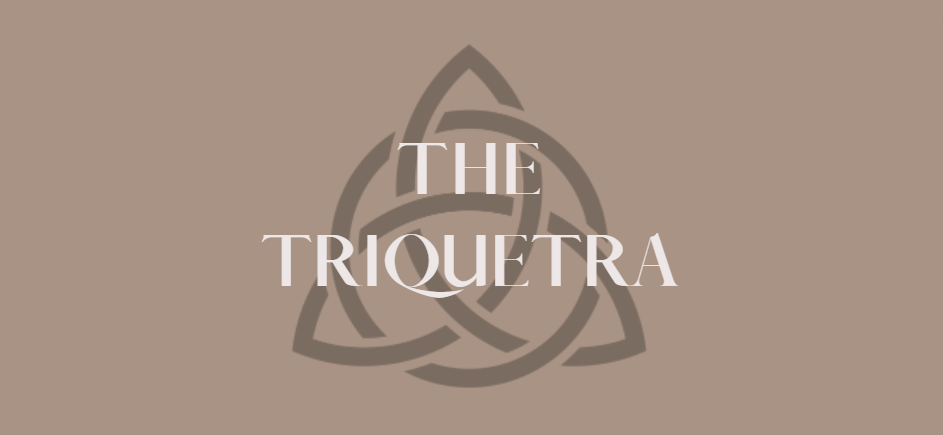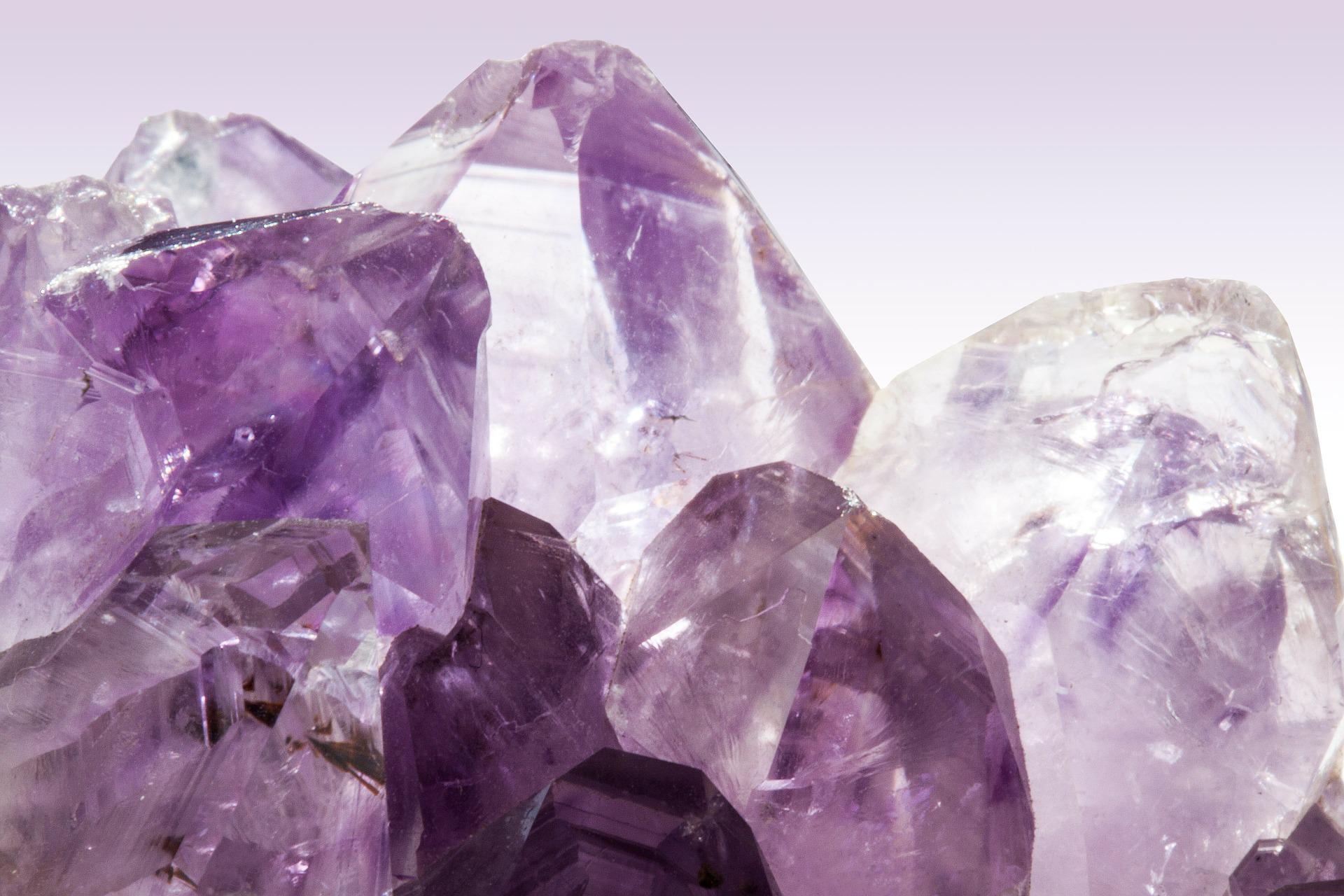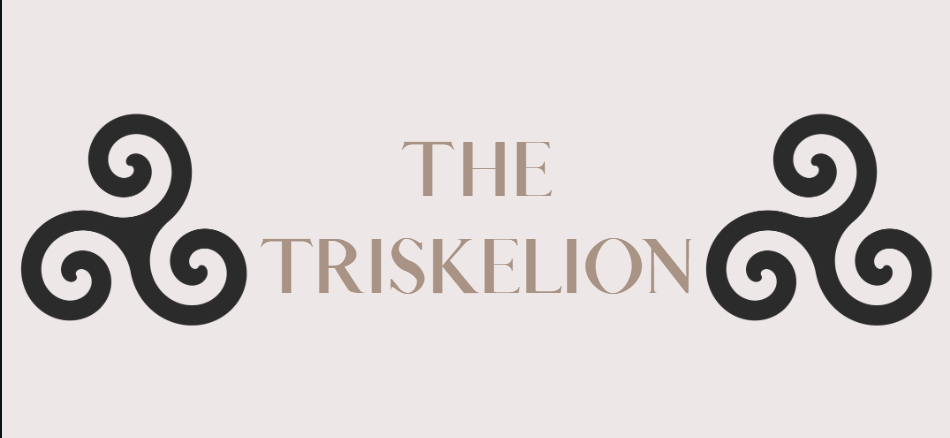Some symbols of our ancestors are used by many cultures, such as the Tree of Life, the Triskelion or the Pentagram. Have you ever heard of the Irish Trinity Knot? You probably know this symbol made of knots that are similar to Celtic patterns. It was popularized in 1998 with the famous series: "Charmed", just like the Triskelion. In reality, this mystical symbol goes far beyond fiction and has existed since the dawn of time under the name of "The triquetra".
What is a triquetra
The triquetra is an ancient symbol composed of three overlapping and interconnected arcs, often described as a Vesica Pisces shape. This creates a distinctive tri-pointed figure that resembles a three-cornered knot, with each internal arc crafted to appear as if it has no beginning or end. The name "triquetra" itself means "three-cornered," reflecting its form, but its significance is far more profound and extends back to pre-Celtic origins.

Historically, the concept of three is central to the triquetra, embodying what is commonly referred to as the "power of three." This theme is a fundamental aspect of the symbol's enduring appeal and mystical significance. Although commonly known as the triquetra, it also goes by other names such as the trinity knot, the Celtic trinity knot, and the Holy Trinity knot. Each name reflects varying cultural interpretations and uses.
Triquetra origin
Its exact origins are unknown, but the symbol has been found in various forms on Indian heritage sites, as well as in sculptures in Northern Europe and on German runes and coins. The famous symbol has also been found in Celtic culture in the legendary Book of Kells manuscript, believed to date back to the 9th century.
For centuries, the creation of this symbol has been wrongly attributed to the Celtic people. To this day, there is no proof of the veracity of this information. However, this widespread belief gives the impression that this version of events is widely accepted.
While people most often associate this symbol of the intertwined loop with Celtic mythology, Germanic culture has also played a large part in anchoring these emblematic ornaments in European culture. Most European triquetra are less than 2000 years old, and many of its uses are clearly decorative rather than symbolic.
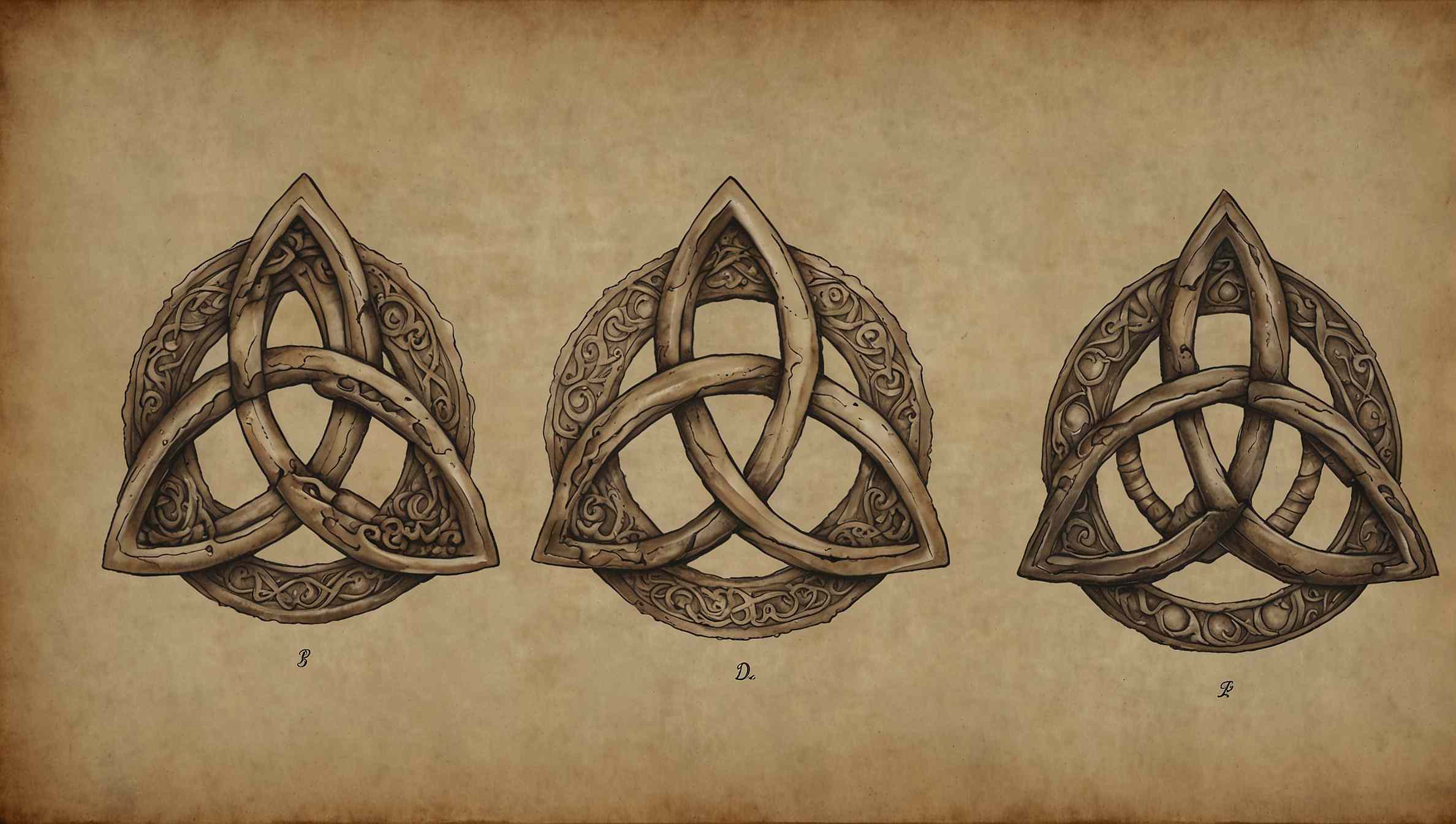
Triquetra meaning
The meanings attributed to the Celtic trinity knot and the trinity knot can differ significantly, rooted in diverse cultural beliefs, but they both share the foundational concept of three. This concept ties the various interpretations together, highlighting the symbol's versatility and depth.
In some representations, especially those stemming from Christian symbolism, the triquetra is depicted with a circle interlaced through the three arcs, emphasizing unity and eternity. This addition enhances the symbol's significance, linking the triquetra to themes of infinity and the interconnectedness of all life or divinity, depending on the cultural context.
Celtic Meaning of Triquera
In Norse and Celtic traditions, the triquetra held varied significances, often associated with concepts involving the number three—like land, sea, and sky, or various triple deities. It was widely used in decorative arts, such as metalwork and manuscript illumination, particularly during the Insular Art period in Ireland and Britain from the 7th to 12th centuries
Christian Meaning of Triquetra
According to Christian beliefs, the Triquetra represents the Trinity. These geometric shapes often include a circle emphasizing the attribute of spiritual unity or immortality. It is also a symbol of protection, emphasizing the fact that it cannot be broken. It is sometimes called the Trinity Knot or the Trinity Circle.
The use of this symbol was predominantly in Celtic influenced areas, such as the Irish and Scottish communities. Moreover, nowadays, this symbol is a vestige always very present in the Celtic culture.
Wicca Meaning of Triquera
One of the most popular versions of the triquetra today is one that incorporates a circle into the design. The circle alone is a powerful shape. With no boundaries and no beginning or end, it has long been used as a symbol of magic and even plays a role in many religious rituals in cultures around the world.
In Wicca, a practitioner must "draw the circle" before the rite can begin. The circle here represents both a safe zone within which our modern-day witch friends are protected from outside forces (and also from invoked spirits). This enclosed space that contains the spells cast also strengthens their powers.
It is a common belief that the circle can be used to represent eternity, as it has no beginning and no end. This is why we often hear the expressions "the circle of life" and "the cycle of life and rebirth".

Triquetra symbol use
Uses of the triquetra have become much more common over the past two hundred years as the British and Irish have become more interested in their Celtic past. The use of the symbol in a variety of contexts is particularly important in Ireland. It is this modern fascination with the Celts that has led to erroneous historical claims about them.
Nowadays, the triquetra symbol has become a widespread decorative element: talisman, emblem, logos, tattoos etc.. It is used as a symbol with different interpretations:
- Life, death, rebirth
- Love, honor, protection
- Father, mother, child

Triquetra symbol of protection
In the neo-pagan culture, the triquetra represents the 3 phases of a woman's life:
- The young girl
- The mother
- The elderly woman
Triquetra symbol use in Modern Witchcraft
This symbolism can be found in different communities such as Wicca which echoes these stages of life with the symbol of the triple Goddess. The triquetra can also represent concepts such as the past, present and future, or, the body, mind and soul, but also in the Celtic philosophy of the earth, sea and sky.
Pagans have also sometimes considered it a spiritual symbol of protection against darkness, although these interpretations are often based on the mistaken belief that the ancient Celts attributed the same meaning to it. Nevertheless, different peoples have appropriated this symbol and its meaning according to their beliefs and culture.
Here’s a deeper look at how this ancient symbol is utilized and revered in contemporary witchcraft practices:
1. Protective Charm
The triquetra is often used as a protective talisman within magical practices. Its continuous interlocking design is believed to act as a shield that wards off negative energies and protects against spiritual harm. Witches may use the triquetra in casting protective circles or crafting amulets to ensure safety and security during rituals and in everyday life.
2. Meditative and Ritual Aid
The endless, flowing lines of the triquetra make it an ideal focal point for meditation and contemplation. It helps in focusing the mind and can be used as a gateway for deeper spiritual exploration and connection. In ritual contexts, the triquetra helps to enhance and direct energy, facilitating a stronger bond between the physical and spiritual worlds.
3. Symbol of Unity and Diversity
The triquetra also serves as a symbol of unity and interconnectedness, reflecting the core pagan and Wiccan belief in the interconnected nature of all things—the physical, the spiritual, and the divine. This aspect makes the triquetra a popular symbol in ceremonies that emphasize the unity of participants, such as handfastings (Wiccan weddings) or other communal rites.
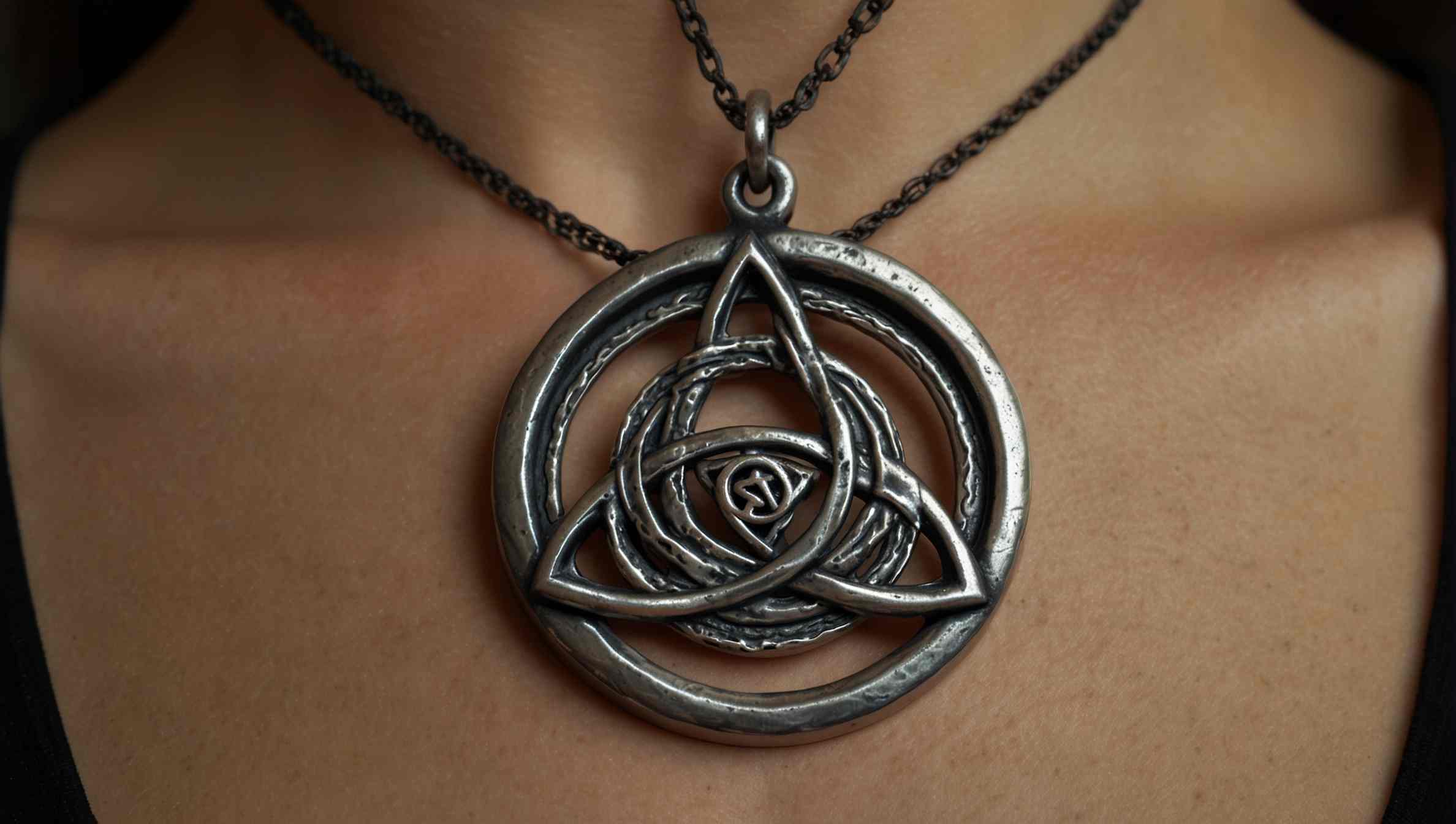
In short...
Whether it is a magical, runic, mythological symbol or Celtic art, with such a wide range of meanings the Trinity Knot has multiple interpretations. The lack of information on the origins of the Triquetra does not allow to establish a unilateral meaning. However, far from being a bad thing, each of us can draw our own meaning from the Celtic knot.

